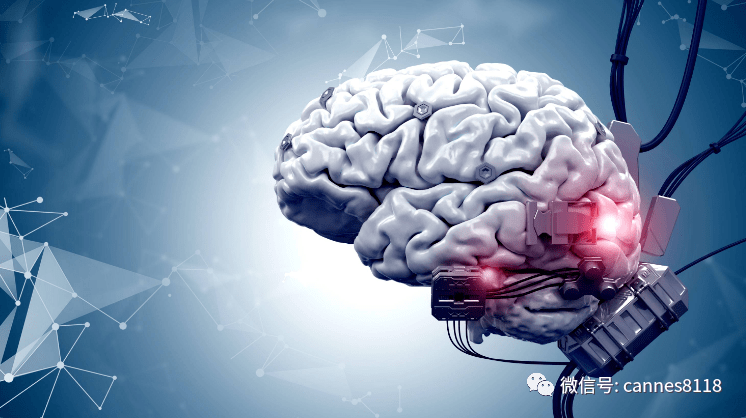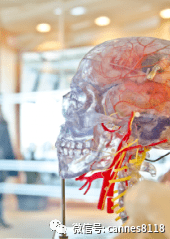 Technology peripherals
Technology peripherals
 AI
AI
 Brain-computer interface is at the forefront, is it a hype concept? Or is it really true?
Brain-computer interface is at the forefront, is it a hype concept? Or is it really true?
Brain-computer interface is at the forefront, is it a hype concept? Or is it really true?
Since this year, artificial intelligence technology and its innovative applications in various industries have become a hot topic. Following ChatGPT, AIGC, and CPO, the concept of brain-computer interface has come to the fore again. Brain-computer interfaces were all the rage last year, and some recent news has once again sparked heated discussions about brain-computer interfaces. Following the surge in the previous two days, BCI surged again this morning.
The simple understanding of brain-computer interface is to establish a connection between the human/animal brain and external devices to achieve the exchange of information. Currently, most of the technical paths for brain-computer interface products include implantable and non-implantable. Products that require craniotomy or interventional surgery to implant probes to read nerve signals are all implantable. However, it is non-implantable that only needs to wear related products to read nerve signals.
The application of currently hot technologies is mainly concentrated in the medical and health field, including the treatment of brain diseases including various neurological and psychiatric diseases, such as epilepsy, stroke, Parkinson's disease and neurodegenerative diseases. However, these manufacturers of brain-computer interfaces are still in the experimental stage, or are still in the research and development stage of product or technology development.

For example, Neuralink's research on brain-computer interface uses high-precision microscopes and robots to implant "linear" flexible electrodes integrated with electrodes and sensors into the cerebral cortex and collect neuron signals. However, this technology is not without its shortcomings. In order to implant flexible electrodes into the cerebral cortex, researchers need to use steel needles as carriers to bring the electrodes into the brain. During the process, they need to be positioned under a microscope to avoid blood vessels, and after the implantation is completed, the coins are inserted into the brain. Large and small implants are sealed on the skull, and the surgical process requires extremely high precision. Moreover, during the experiment on rhesus monkeys, many experimental animals died due to head infections. From the perspective of solutions, steel needles are not the most ideal choice for implantation carriers. The process of withdrawal after completion of implantation can easily cause electrode displacement, and there is the possibility of secondary damage to brain tissue. These issues remain to be resolved.
There is also innovative medical care that has surged in the past two days. Even though it is researching non-implantable brain-computer interface products with its associated company Boling Brain Computer, there is currently no actual product launched or disclosed. Related products help hemiplegic patients achieve autonomous control flexibility and other relevant data. In addition, the "Brain-Computer Interface Lower Limb Exoskeleton Rehabilitation Training System" and Brain-Computer Interface Rehabilitation Training and Evaluation System of Shandong Haitian Intelligent Engineering Co., Ltd. and Siyi (Changsha) Intelligent Technology Co., Ltd. have been approved by the Food and Drug Administration for listing. Comparison of progress It’s fast, but there are also problems, such as insufficient decoding information.

Many non-implantable brain-computer interface products currently released are only used to handle simple operations, and more complex tasks cannot be completed. There are also many manufacturers and companies that are optimistic about the development of brain-computer interfaces in the direction of implants. There are also some material or technical barriers. The implanted materials will not last long in the brain, and the hard electrodes implanted in the human brain will also Rejection reaction occurs. Therefore, judging from the progress, many experimental and practical operations for implantable brain-computer interface products are still on animals, and the process of animal testing has not been completely solved. Relatively quickly, Neuralink, a brain-computer interface company owned by Musk, announced on May 25, local time, that it had received approval from the U.S. Food and Drug Administration (FDA) and would launch the first human clinical study of brain implants.
We mentioned before that it is difficult to obtain FDA approval. On November 30, 2022, Elon Musk, CEO of the brain-computer interface company Neuralink, stated that he had submitted a request to the U.S. Food and Drug Administration (FDA) ) submitted most of the documents, but should not have been approved. This approval is a great progress for the medical field.
is a concept? Or real ammunition?
my country’s brain-computer interface technology has also made some progress in clinical medicine. Ten years ago, a research team from Zhejiang University implanted a semi-invasive brain-computer interface into the skull of a quadriplegic patient for the first time. Based on cortical EEG signals, the patient was assisted in completing guessing movements by controlling a robotic hand with his or her thoughts. Then the Neurosurgery Department of Huashan Hospital Affiliated to Fudan University and the Neurosurgery Department of Beijing Tiantan Hospital Affiliated to Capital Medical University conducted research on disorders of consciousness, using technologies such as neuromodulation and brain-computer interface to maximize the recovery of consciousness and improvement of neurological function. In addition, brain-computer interface technology is used to treat Parkinson's disease combined with Parkinson's dementia, the brain-computer interface system for covert Chinese language communication is developed, and flexible microarray electrodes are used to accurately locate the dorsal brainstem nuclei and epidural electrode stimulation technology is used to treat spinal cord injuries. and other studies.
Innovative Medical mentioned that its wearable brain-computer interface products can help hemiplegic patients achieve autonomous control of the forearms and hands of their disabled limbs at any position within the normal range of movement of the limbs. It’s just that Innovative Medical has not disclosed more detailed data on the flexibility of “autonomous control”.
Innovative Medical and Professor Xu Kedi from the Qiushi Institute of Advanced Studies of Zhejiang University established Boling Brain Computer (Hangzhou) Technology Co., Ltd. (hereinafter referred to as "Boling Brain Computer"). Its brain-computer interface products are subordinate to wearable devices. (non-implantable), it can help hemiplegic patients achieve autonomous movement of the forearm and hand of their disabled limbs. In terms of research progress, the principle prototype has been upgraded, and in-vivo testing on patients has begun. In the future, we will continue to steadily promote in-depth research on product technical solutions, and gradually promote and expand patient testing of the second-generation principle prototype.
Sanbo Brain Science did not reveal more information about its exploration of brain-computer interface applications. It only told investors on May 18 that brain-computer interface technology has great application prospects in the clinical diagnosis and treatment of neuromedicine and neurorehabilitation. The institution always pays attention to the application and development of brain-computer interface technology in the medical field, and also participates in the basic application and exploration of clinical applications.
In fact, there is another company, Xinwei Medical, which is one of the few listed companies in the market that is directly involved in the research and development of brain-computer interfaces. Xinwei Medical originally made innovative medical devices, and its products cover neurological intervention, cardiac intervention, Pulmonary intervention, etc. Among them, neurointervention is the core field of Xinwei Medical. Several products have now been approved by NMPA. There are 15 NMPA-approved neurointerventional device products and a complete neurointerventional product portfolio, covering various neurointerventional procedures for stroke treatment and prevention.

The market for neurointerventional products alone is also very large, such as access, hemorrhage, and ischemia. The access type is a necessary consumable for interventional surgery and plays the role of establishing a delivery channel; the bleeding type is used to block malformed blood vessels, treat cerebral aneurysms, and seal intracranial blood vessel ruptures; the ischemic type is used to remove thrombocytes and unblock blood vessels. . Broken down, neurointerventional products are further divided into ischemic thrombectomy devices, ischemic prevention devices, hemorrhagic treatment devices, intracranial artery stenosis treatment devices, and vascular access devices. Xinwei Medical has an extensive pipeline, and most of its products have been approved and are in preparation for commercialization.
A while ago, an interventional brain-computer interface trial on non-human primates led by Professor Duan Feng’s team was successful in Beijing. This trial was led by Professor Duan Feng’s team at Nankai University, and the Chinese People’s Liberation Army General Hospital (301 Hospital) ) and Xinwei Medical were jointly completed.
As mentioned above, most of the technical paths for brain-computer interfaces include implantable and non-implantable. The experiment was led by Professor Duan Feng of Nankai University. Duan Feng has been engaged in research on implantable and non-implantable brain-computer interfaces. The implantable brain-computer interface experiment was used to control the behavior of mice, and the non-implantable brain-computer interface was used to control the behavior of mice. Used to control wheelchairs and cars.
Through relevant research, Duan Feng believes that both technologies have shortcomings. For example, the implanted brain-computer interface can cause great harm to the experimenter and its safety is difficult to guarantee. However, the accuracy of signal acquisition and long-term recognition stability of non-implantable brain-computer interfaces need to be improved. Considering that the objective interference of scalp surface EEG signals is too complex, technical barriers will be difficult to break through in the short term. After a series of studies, Duan Feng cooperated with Xinwei Medical, a neurointerventional device company, to develop an interventional brain-computer interface. The key components involved in this type of brain-computer interface are the front-end EEG signal collection sensor (electrodes placed on the bracket) and the back-end signal amplifier.
This technology does not require a craniotomy and removal of large pieces of skull. Instead, it only makes a small opening in the jugular vein of the subject, and uses a jugular vein catheter to send a stent equipped with sensors into the blood vessels located in the motor cortex of the brain. When the catheter is removed, the stent expands within the vessel wall and closes to the inner wall of the vessel, thereby collecting EEG signals.
After the operation is completed, the collected EEG signals are processed by filtering, noise reduction, etc., and the signals are imported into the computer and analyzed. After recognizing the movement intention, the computer will send control commands to the robotic arm, and then operate the The robotic arm moves to bring food to the monkey's mouth. Because the monkey's hands are tied, it will have the urge to reach out when it wants to eat food, which will continue to generate brain electrical signals to control the movement of the robotic arm, reinforcing the training again and again.
Under this technology, the accuracy and stability of the collected signals are also good, and it uses mature neurointerventional technology in the medical field, which can ensure more safety.
There is still a lot of work to be done before the interventional brain-computer interface designed by existing neurointerventional devices can be directly used in human clinical practice and industrialization. Currently, Xinwei Medical has started clinical trials of a vascular interventional robot system. It is not the product used in this trial. The vascular interventional robot system is mainly used for instrument control and operation in interventional surgeries.

Medical care may be the first to hit the market with brain-computer interfaces!
From the research progress of these brain-computer interfaces, there will be many practical applications, such as medical health, entertainment, smart home, military, etc. But it may be the fastest to be implemented in medical treatment and closest to commercial application.
Some medical companies have engaged in rehabilitation treatment, pain management, brain-computer controlled prosthetics and other fields, such as neurological rehabilitation. Related research has verified the feasibility of brain-computer interface. The brain can participate in the control system, using Directly control the equipment with your thoughts to improve recovery efficiency. There are also medical companies that are conducting research on brain-computer interface technology in neuroscience, psychology, cognitive science, etc. Therefore, medical clinical applications will still be the mainstream direction of brain-computer interface applications.
In the research and application of brain-computer interface, it often involves the direction of brain reading, that is, decoding brain information, interpreting people's inner consciousness and emotions, so that patients with symptoms such as consciousness disorders and autism can reconnect with the world. build connection. The next step is to establish brain-computer interaction and use external stimulation to improve brain symptoms. In the future, there will be many clinical applications in four or five indications such as depression, pain, and epilepsy. Or in the field of non-invasive brain-computer interfaces, using hardware combined with cognitive neuroscience, the technology is even more difficult.
Lu Changshun (Cairns) Certificate number: A0150619070003. [The above content only represents personal opinions and does not constitute a basis for buying and selling. The stock market is risky, so investment needs to be cautious]
The above is the detailed content of Brain-computer interface is at the forefront, is it a hype concept? Or is it really true?. For more information, please follow other related articles on the PHP Chinese website!

Hot AI Tools

Undresser.AI Undress
AI-powered app for creating realistic nude photos

AI Clothes Remover
Online AI tool for removing clothes from photos.

Undress AI Tool
Undress images for free

Clothoff.io
AI clothes remover

AI Hentai Generator
Generate AI Hentai for free.

Hot Article

Hot Tools

Notepad++7.3.1
Easy-to-use and free code editor

SublimeText3 Chinese version
Chinese version, very easy to use

Zend Studio 13.0.1
Powerful PHP integrated development environment

Dreamweaver CS6
Visual web development tools

SublimeText3 Mac version
God-level code editing software (SublimeText3)

Hot Topics
 1376
1376
 52
52
 What does the metaverse concept mean? What is the metaverse concept?
Feb 22, 2024 pm 03:55 PM
What does the metaverse concept mean? What is the metaverse concept?
Feb 22, 2024 pm 03:55 PM
The Metaverse is an illusory world that uses technology to map and interact with the real world. Analysis 1 Metaverse [Metaverse] is an illusory world that makes full use of technological methods to link and create, and maps and interacts with the real world. It is a data living space with the latest social development system. The 2-dimensional universe is essentially a virtual technology and digital process of the real world, which requires a lot of transformation of content production, economic system, customer experience and physical world content. 3 However, the development trend of the metaverse is gradual. It is finally formed by the continuous combination and evolution of many tools and platforms with the support of shared infrastructure, standards and protocols. Supplement: What is the metaverse composed of? 1 The metaverse is composed of Meta and Verse, Meta is transcendence, and V
 Learn more about Gunicorn's fundamentals and features
Jan 03, 2024 am 08:41 AM
Learn more about Gunicorn's fundamentals and features
Jan 03, 2024 am 08:41 AM
Basic concepts and functions of Gunicorn Gunicorn is a tool for running WSGI servers in Python web applications. WSGI (Web Server Gateway Interface) is a specification defined by the Python language and is used to define the communication interface between web servers and web applications. Gunicorn enables Python web applications to be deployed and run in production environments by implementing the WSGI specification. The function of Gunicorn is to
 Write a Java program to calculate the area and perimeter of a rectangle using the concept of classes
Sep 03, 2023 am 11:37 AM
Write a Java program to calculate the area and perimeter of a rectangle using the concept of classes
Sep 03, 2023 am 11:37 AM
The Java language is one of the most commonly used object-oriented programming languages in the world today. The concept of classes is one of the most important features of object-oriented languages. A class is like a blueprint for an object. For example, when we want to build a house, we first create a blueprint of the house, in other words, we create a plan that shows how we are going to build the house. According to this plan we can build many houses. Likewise, using classes, we can create many objects. Classes are blueprints for creating many objects, where objects are real-world entities like cars, bikes, pens, etc. A class has the characteristics of all objects, and the objects have the values of these characteristics. In this article, we will write a Java program to find the perimeter and faces of a rectangle using the concept of classes
 Master the key concepts of Spring MVC: Understand these important features
Dec 29, 2023 am 09:14 AM
Master the key concepts of Spring MVC: Understand these important features
Dec 29, 2023 am 09:14 AM
Understand the key features of SpringMVC: To master these important concepts, specific code examples are required. SpringMVC is a Java-based web application development framework that helps developers build flexible and scalable structures through the Model-View-Controller (MVC) architectural pattern. web application. Understanding and mastering the key features of SpringMVC will enable us to develop and manage our web applications more efficiently. This article will introduce some important concepts of SpringMVC
 Introduction and core concepts of Oracle RAC
Mar 07, 2024 am 11:39 AM
Introduction and core concepts of Oracle RAC
Mar 07, 2024 am 11:39 AM
Introduction and core concepts of OracleRAC (RealApplicationClusters) As the amount of enterprise data continues to grow and the demand for high availability and high performance becomes increasingly prominent, database cluster technology becomes more and more important. OracleRAC (RealApplicationClusters) is designed to solve this problem. OracleRAC is a high-availability, high-performance cluster database solution launched by Oracle.
 What is the Oracle home directory? Detailed explanation of the concept and function of Oracle home directory
Mar 08, 2024 am 08:18 AM
What is the Oracle home directory? Detailed explanation of the concept and function of Oracle home directory
Mar 08, 2024 am 08:18 AM
Title: Oracle Master Catalog: Concepts, Functions and Code Examples The master catalog (MasterCatalog) in the Oracle database is the basic directory structure of the database and is used to store metadata about database objects and other database information. The home directory plays the role of the management center of the database, recording information about all objects in the database, such as tables, indexes, views, users, etc., and also includes database configuration information and permission information. In Oracle database, the concept of home directory is very important, it is used
 Byte and NetEase have entered the market one after another. After AI, have major manufacturers found the next outlet?
Jul 06, 2023 pm 04:41 PM
Byte and NetEase have entered the market one after another. After AI, have major manufacturers found the next outlet?
Jul 06, 2023 pm 04:41 PM
If you want to ask about the hottest technology trend at the moment, AI large models must be the most popular. But perhaps because the AI track is so popular, there are too many companies joining the competition, and the cost and difficulty of large-scale model development are too high, the pressure on the giants is increasing day by day, and they are beginning to think about whether they should continue to focus on large AI models. At this time, another forgotten track suddenly became lively again - robots. On this side, it was revealed that ByteDance will expand its robot research and development team from the current approximately 50 people to hundreds of people before the end of the year. It will mainly develop and produce intelligent sorting and product packaging robots to help Byte's e-commerce business. It is reported that the head of ByteDance’s robot research and development team is Li Hang, director of Byte AILab. The latter served as director and chief scientist of Huawei’s Noah’s Ark Laboratory and has rich experience.
 Popular in the investment circle! Is brain-computer interface a track that can be won?
Jun 03, 2023 am 10:14 AM
Popular in the investment circle! Is brain-computer interface a track that can be won?
Jun 03, 2023 am 10:14 AM
Author/Editor of Baked Buns Under the Starry Sky/Spinach’s Starry Sky Typesetting/Leeks Under the Starry Sky Brain-Computer Interface, a term with a science fiction flavor, has recently become one of the most common hot words among investors. After all, no sector can Like it, the index can rise 8.2% in a single day. Simply put, the brain-computer interface establishes a direct connection between the human brain and external devices, allowing our brains to have a "dialogue" with the machine. This pathway is to measure and collect the activities of the central nervous system, and then translate them into signals that can be recognized by the outside world. Recently, at the "Brain-Computer Interface Innovation and Development Forum" of the Zhongguancun Forum, a leader from the ministry also proposed that my country has formed a full industry chain of brain-computer interface covering the basic layer, technical layer and application layer, and it has been applied in medical,



